Home > Article > Web Front-end > AngularJS scope learning
Introduction to JavaScript Prototypal Inheritance
There is two-way data binding in AngularJs, but not every modification will produce a corresponding effect. Sometimes this may happen when a value of a basic type is passed. This situation should also exist in JavaScript itself. I will dig a hole first and fill it in after I learn JavaScript well.
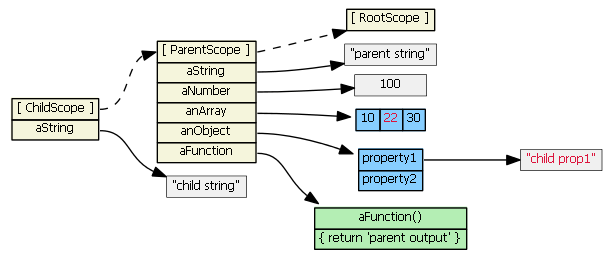
The above picture is the prototype inheritance diagram of JavaScript. The subclass will inherit the attributes of the parent class. When reading the value of the attribute inherited by the subclass from the parent class, it will access the prototype chain, that is, go up layer by layer until it is found. Properties in the parent class. However, if you directly assign a value to a property of a basic type in a subclass, the prototype chain will not be accessed, that is, a new property with the same name will be created in the subclass, and the properties in the parent class will not be accessed when accessed again. When accessing an object inherited from a parent class, the prototype chain will be accessed.
childScope.aString === 'parent string' //true 访问了原型链 childScope.aNumber === 100 //true 访问了原型链 childScope.aNumber = 20 //不访问原型链,子类中将增加一个新属性,值为20 childScope.aString = 'child string' //不访问原型链,子类中将增加一个新的属性,值为 child string childScope.anArray[2] = 100 //访问了原型链,父类中的anArray对象中第三个值被修改
Testing ng-repeat, ng-switch and ng-include in AngularJS
{{list1}}
{{list2}}
switch's parent scope, parent scope's child scope, different with false case
parent scope, not switch scope
var TestScopeModule = angular.module('TestScopeModule', []);
TestScopeModule.controller('TestScopeCtrl',['$scope',function ($scope) {
$scope.list1 = ['value1','value2', 'value3'];
$scope.list2 = [{text : 'value1'},{text : 'value2'},{text : 'value3'}];
$scope.showScope = function (e) {
console.log(angular.element(e.srcElement).scope());
};
$scope.loginData = false;
$scope.parent = {};
$scope.parent.loginData = false;
$scope.login = function () {
$scope.loginData = true;
};
$scope.logout = function () {
$scope.loginData = false;
};
$scope.login1 = function () {
$scope.parent.loginData = true;
};
$scope.logout1 = function () {
$scope.parent.loginData = false;
};
}])The above is a small piece of test code, which tests ng-repeat, ng-switch and ng-include respectively. The test results are marked in the code. It is the scope of the child scope and the parent scope.
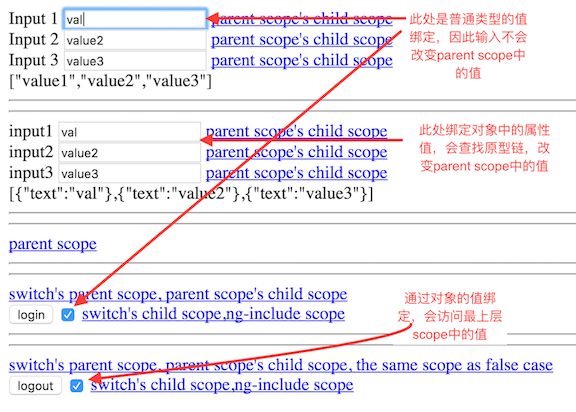
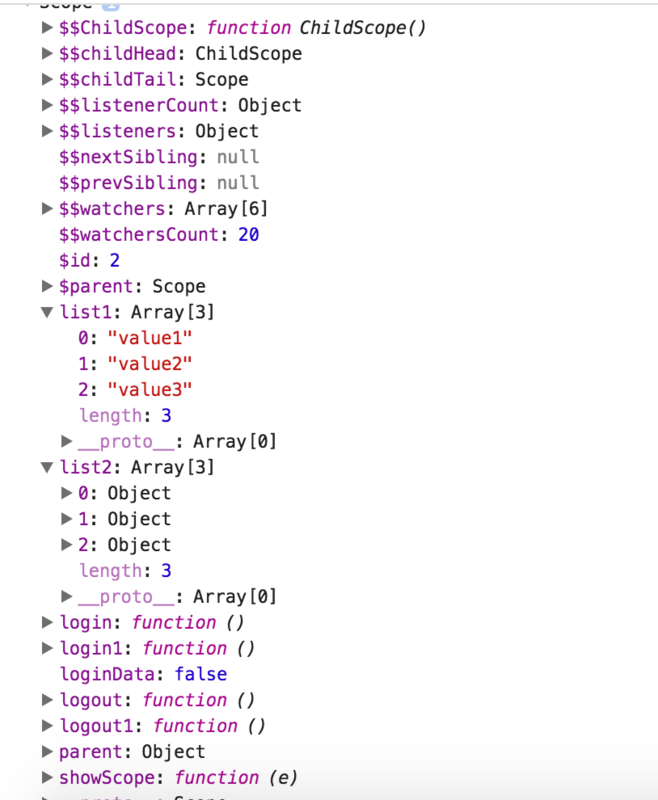
Attributes and values in the parent scope
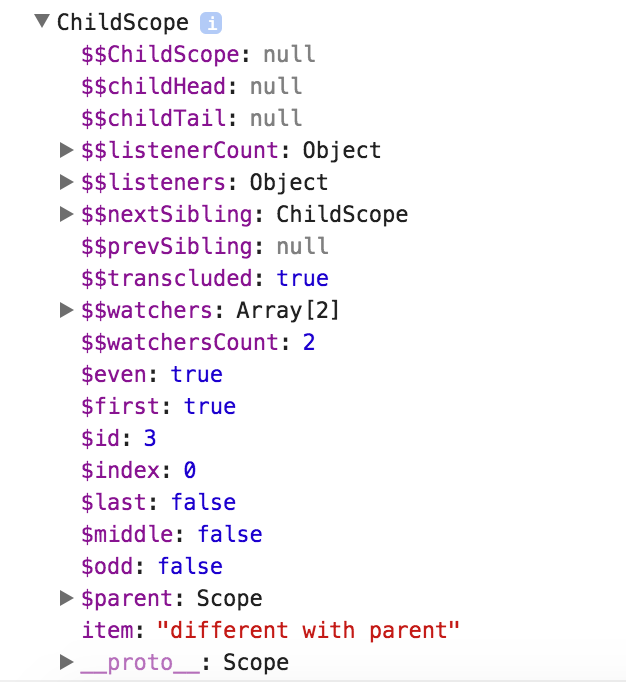
The first child scope in the first ng-repeat, the scope has its own item attributes and values, here because it is basic data Type, the prototype chain is not accessed when changing the value, so it is different from the value in the parent scope. ng-repeat will generate multiple child scopes, and each child scope will have its own item attribute.
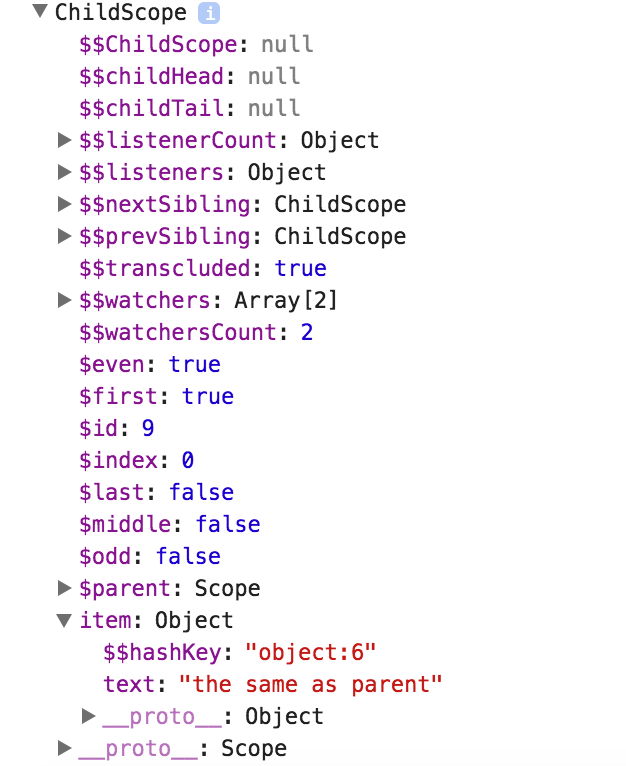
The first child scope in the second ng-repeat has its own item attributes and values in the scope. The item here is an object, so when changing the value in the item object, the prototype chain will be accessed first, so It is the same as the value in the parent scope. In the child scope generated by ngswitch, you can see that $parent is the parent scope. Because nginclude is used in ngswitch here, nginclude will also generate its own scope, so there are childHead and childTail. ngswitch will generate scopes respectively in true and false cases, which are two different scopes with different ID numbers.

This is the child scope generated by nginclude in ngswitch. You can see that the $id of $parent is 12, which is the id of the scope generated by ngswitch.
Statement:The content of this article is voluntarily contributed by netizens, and the copyright belongs to the original author. This site does not assume corresponding legal responsibility. If you find any content suspected of plagiarism or infringement, please contact admin@php.cnPrevious article:WeChat applet todolistNext article:WeChat applet todolistRelated articles
See more